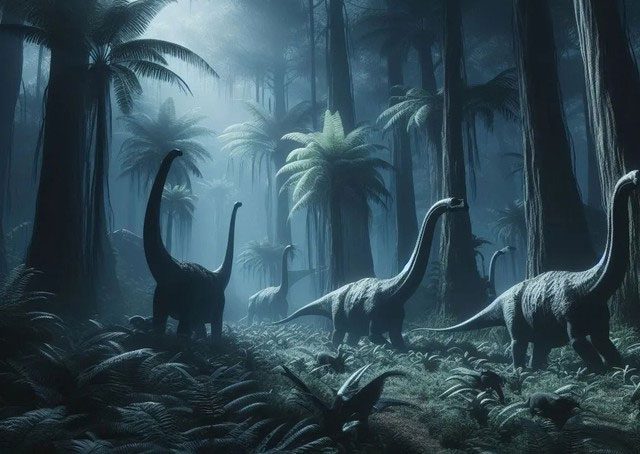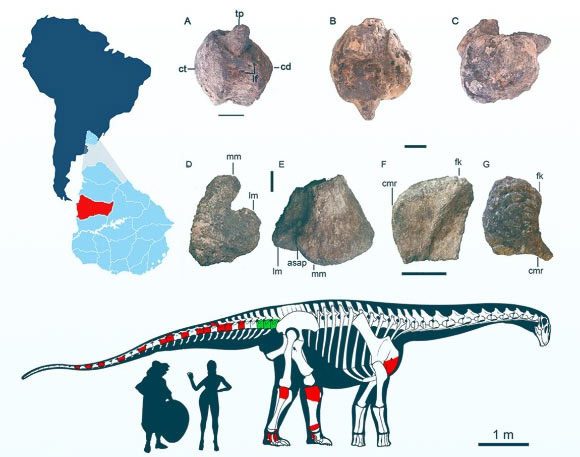This White Chalk Age monster belongs to a previously unknown species and genus of titanosaurian lizards.
According to Sci-News, the newly discovered monster is named Udelartitan celeste, and it belongs to a superfamily of titanosaurian lizards known as Saltasauroidea.
Titanosaurian lizards are the largest dinosaurs in the world, part of the sauropod family, characterized by their long necks, massive bodies, and four pillar-like legs.

Many super monsters of the titanosaurian group once roamed ancient Uruguay – (Graphic image).
Like other “giants” in the titanosaur family, this creature had a length of 15-16 meters when alive. The largest representatives of titanosaurians could reach lengths of several tens of meters.
The Udelartitan celeste was identified through 60 fossilized vertebrae and eggshells found in the Guchón Formation in Uruguay.

Some fossil parts discovered – (Photo: Cretaceous Research).
According to analysis by Dr. Matias Soto from the Geological Science Institute of Uruguay and colleagues, the fossils of this new species date back approximately 85 million years, placing them in the Cretaceous period, which was a golden age for giant dinosaurs.
Prior to this, four species of titanosaurians had been discovered in the country since the early 20th century, but all belonged to a different lineage known as Aelosaurini.
The emergence of a new species within the Saltasauroidea group is valuable evidence that this giant monster group was abundant in Uruguay.
According to a publication in the scientific journal Cretaceous Research, this new monster species, along with its entire family of magnificent titanosaurians, thrived on the supercontinent Gondwana during the Cretaceous period.
Their original homeland was part of Gondwana, which later separated to form the present-day continent of South America.


















































